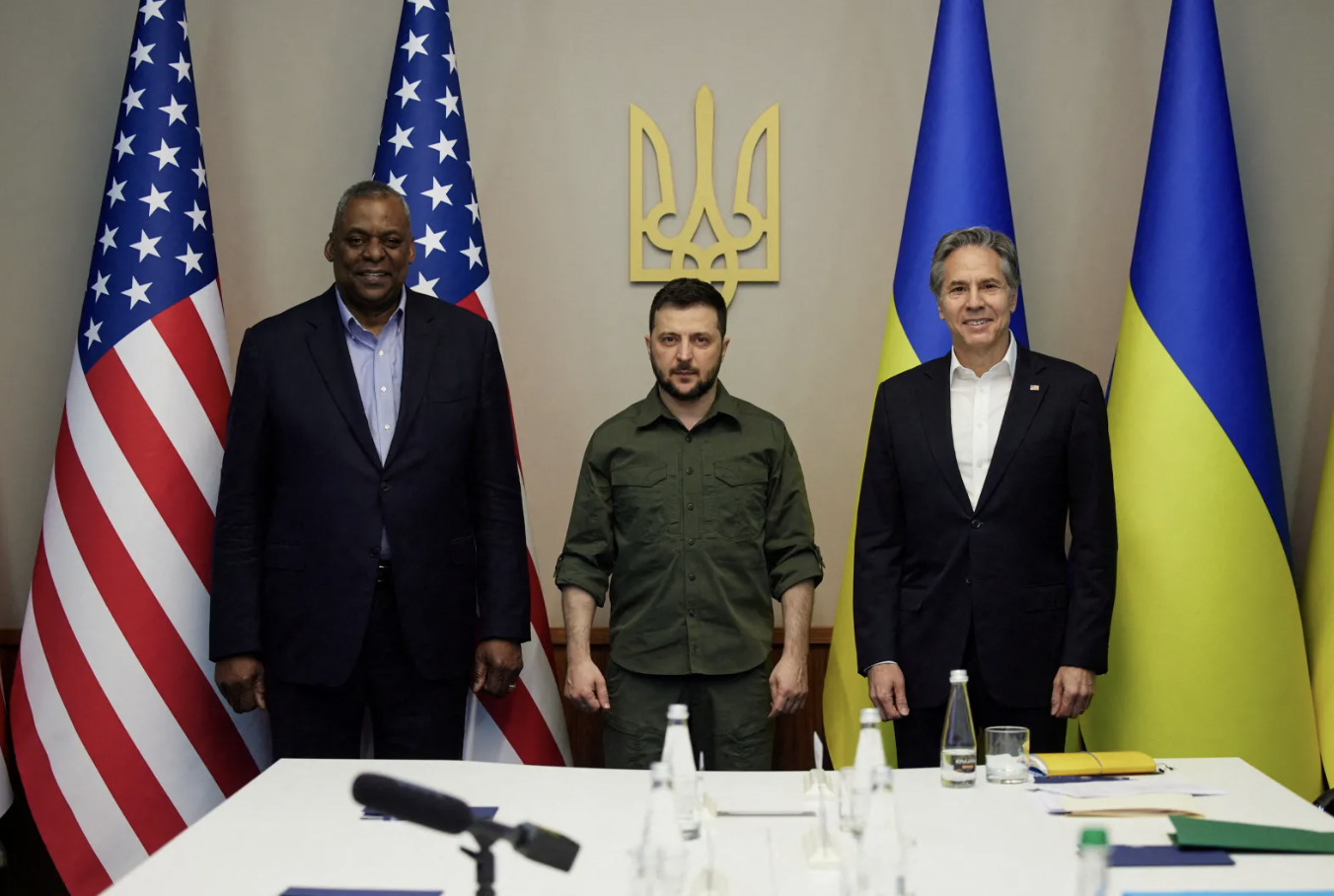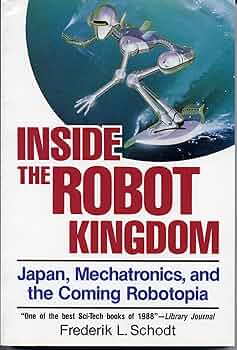
Erika Ayers Badan: The Future of Advertising
Today we’re talking about the Omnicom–IPG merger and what it means for agency jobs, how AI is replacing layers of work inside holding companies, and…
Thought Leader: Erika Ayers Badan

In the ten weeks since Russia began its assault on Ukraine, tensions between Russia and Western countries have been greater than at any point since the Cuban missile crisis. U.S. President Joe Biden has accused Russian President Vladimir Putin, leader of a nuclear-armed superpower, of carrying out a “genocide,” called him a “war criminal,” and stated that he “cannot remain in power.” According to U.S. Secretary of Defense Lloyd Austin, the United States now seeks to “weaken Russia” to the point that it can no longer threaten its neighbors. Liz Truss, the British Foreign Secretary, has called the war in Ukraine “our war.”
Other European leaders have been more cautious in their choice of words but just as clear in their opposition to Russian aggression. “Atrocious. Unbelievable. Shocking,” European Commission President Ursula von der Leyen said after visiting the town of Bucha in early April. The conflict has put EU members on military high alert and dramatically underlined the dangers of European energy dependence on Russia. Complacency about Putin’s willingness to use force and weaponize trade has vanished, as has reluctance to welcome Ukraine into the European Union. NATO has deployed thousands of new troops near Russia’s borders, and the alliance will likely soon add Finland and Sweden to its ranks.
Russian leaders, meanwhile, have dramatically shifted their framing of the war—from a limited “special operation” to “liberate” parts of eastern Ukraine to an all-out existential struggle against NATO. Putin has accused the United States and others of trying to “destroy Russia from within,” and on multiple occasions, Russian leaders have threatened to deploy nuclear weapons against any country that dares intervene in the conflict.
Taken together, these developments constitute a dangerous new reality. Gone are the days when Russia’s war aims consisted solely of “de-Nazifying and demilitarizing” Ukraine. Also gone are the days when U.S. and allied governments limited their involvement to helping Ukraine defend its sovereignty and territorial integrity. Leaders on both sides of the conflict have now crossed a series of lines that cannot easily be uncrossed. The result is a new Cold War between Russia and its opponents—one that promises to be less global than its twentieth-century counterpart but also less stable and predictable.
The emerging contest between Russia and the United States will be both less and more dangerous than its historic predecessor. For one, the conflict will be less threatening because Russia, despite its nuclear arsenal and vast natural resource wealth, poses a far less potent military threat to Washington than did the Soviet Union after World War II. Putin’s invasion, after all, has provided U.S. and allied officials with a close look at Moscow’s significant military shortcomings. Given the complete failure of Russia’s initial offensive on Kyiv and Moscow’s enormous battlefield losses against vastly outnumbered and outgunned Ukrainian forces, the billions Russia has spent on military modernization over the past decade were likely wasted, stolen, or both.
Just as important is the size of Russia’s economy, which—despite oil and gas revenue—was smaller than New York City’s at the time of the invasion. And that was before U.S. and allied sanctions forced what is now expected to be an economic contraction of ten to 15 percent in 2022—a depression that will inevitably limit Russia’s ability to coerce other nations with its economic power. In contrast to the Soviet Union’s command economy, which insulated the country from economic warfare, Putin’s Russia has grown dependent on foreign trade and investment. It is now scrambling to make its international debt payments. Of course, Russia can also weaponize interdependence to its advantage, as the Kremlin’s recent shutoff of gas exports to Bulgaria and Poland demonstrates. But while Europe can—and will—survive a decoupling from Russia, Moscow’s strategic options are much more limited.
During the twentieth century, the Soviet Union’s ideological appeal earned Moscow true friends and admirers around the world, including Cuba and Nicaragua in the Americas, Egypt and Syria in the Middle East, Cambodia and Vietnam in Southeast Asia, and Ethiopia and Mozambique in Africa. Today’s Russia, however, has only clients and dependents. Although many states—including most low- and middle-income democracies, such as Brazil, India, Indonesia, and Mexico—remain neutral and continue to do business with Russia, only Belarus, Eritrea, North Korea, and Syria have defended Russia’s invasion at the United Nations. (Venezuela would also have supported Russia if Caracas had paid its UN arrears and had a chance to vote.)
The contest between Russia and the United States will be both less and more dangerous than its predecessor.
Even Beijing has limited value as a Russian ally. Although Chinese leader Xi Jinping ended a face-to-face meeting with Putin just before the war with a pledge that China’s friendship with Russia had “no limits,” Xi remains far more concerned with China’s future and his own than with Putin’s. Beijing certainly shares Moscow’s desire to push back against what both capitals see as U.S. and European efforts to contain them, and Xi is unlikely to condemn Russian behavior short of chemical or nuclear weapons use. But clearly there are limits to China’s support for Putin.
China may be a revisionist power bent on undermining U.S. hegemony, but Beijing has an overwhelming interest in preserving global stability. The legitimacy of Xi and the Chinese Communist Party’s domestic rule depends on continued economic growth—and continued growth depends on pragmatic relations with Beijing’s top trading partners in Europe, Japan, and the United States. China is therefore unlikely to risk confrontation by openly violating allied sanctions or providing direct military support to Moscow.
Similar limits apply to trade. Although Beijing and Moscow are natural partners—China needs Russian oil, gas, metals, and minerals, and Russia badly needs Chinese cash—the infrastructure needed to shift Europe-bound exports to the east will require enormous long-term financial investments. China’s economic growth, however, is already slowing, and Beijing’s willingness to take on such spending will be conditional on extracting highly favorable terms from Moscow. In short, despite Xi’s no-limits rhetoric, Beijing’s friendship with Russia has clear political and economic boundaries.
Unfortunately, that is where the good news for Washington and its allies ends. In contrast to the twentieth-century Cold War, the United States is now the most politically divided and dysfunctional member of the G-7. Although both Democrats and Republicans now agree that Ukrainians deserve weapons and Russians deserve sanctions, and both parties agree that the United States should avoid direct confrontation with Moscow, such domestic political unity won’t last long. With midterm elections on the horizon, Republicans will highlight skyrocketing gas prices and record inflation—all while painting Biden as a weak and unsteady leader who “lost Ukraine.” In turn, Democrats will try to tie the GOP to former President Donald Trump’s long-standing admiration for Putin and skepticism of NATO. As Europeans witness a return to bitter partisan sniping in the United States, they will rightly wonder how the upcoming elections might change Washington’s approach to both Russia and the transatlantic alliance—particularly if Trump emerges as the 2024 Republican presidential nominee.
As the new Cold War heats up, leaders must begin thinking about guardrails.
Another element of danger lies in Western leaders’ hardening rhetoric of ideological competition between democracies and autocracies. Biden and some European leaders, for instance, have argued that Russia should be kicked out of the G-20, the group that brings together the leaders of the world’s 20 largest economies. Despite cynical claims that the G-20 is nothing more than a geopolitical photo opportunity, the forum proved its value during the 2008 global financial crisis, when it served as a vital space to convene countries with differing political systems and ideological values. As markets collapsed, G-20 leaders realized that they could respond to global economic disaster only if nondemocracies and state capitalists such as China, Russia, and Saudi Arabia all had seats at the table alongside advanced industrialized democracies.
Biden, by contrast, doesn’t see much need for cooperation across ideological boundaries. Rather than portraying the conflict in Ukraine as a discrete attempt to combat a war of aggression, the U.S. president has framed it as a “battle between democracy and autocracy.” Xi Jinping can’t like the sound of that, and China will naturally reject efforts to push Russia out of the G-20. Come the group’s November summit, Biden and allied leaders must choose between sharing a table with autocrats such as Putin and Xi or rendering the G-20 dysfunctional at a time when global threats that demand collective action—climate change, pandemics, and the spread of disruptive technologies, to name just a few—are growing in importance. The prospect of a breakdown in multilateral cooperation is the single greatest danger to the global order since the collapse of the Soviet Union.
A final reason why this new Cold War will prove more dangerous than the last is the growing likelihood that Russia will resort to truly destructive cyberwarfare. Despite the asymmetry between Moscow and Washington in traditional measures of power, Russia’s most sophisticated digital weapons are more destabilizing than the nuclear missiles that threatened the United States and Europe in the 1980s. Cyberweapons can’t instantly kill people, but they remain highly destructive—capable of inflicting serious damage on financial systems, power grids, and other essential infrastructure. Most important, states are far more likely to use cyberweapons than other weapons of mass destruction because they are easier to build, easier to hide, extremely hard to defend against, and nearly impossible to deter.
Washington should take little comfort in the fact that Putin has not yet wielded the most destructive of these weapons. Effective cyberattacks take months, perhaps years, to plan, and the war in Ukraine has only just begun. Just as the United States and Europe responded to the invasion by punishing Russia economically, Moscow can use its cyberweapons to cripple the United States and Europe politically—by targeting upcoming elections with ever-larger and more frequent waves of disinformation.
As the new Cold War heats up, leaders must begin thinking about guardrails—safety measures designed to ensure that this conflict doesn’t escalate into a direct confrontation between Russia and NATO. After the nuclear near miss of the Cuban missile crisis, for instance, U.S., European, and Soviet leaders created fail-safe systems—arms control agreements such as the Intermediate-Range Nuclear Forces Treaty (INF) and confidence-building measures such as the Open Skies agreements—to ensure that proxy wars around the world didn’t trigger World War III.
Today, however, there is no cyber-equivalent of the INF treaty and no path to negotiate and enforce one. There is also little trust between Russia’s president and Western governments, and it is hard to imagine how (and how long it would take) to build enough confidence to create new rules and institutions. The UN Security Council is broken beyond repair, and with no realistic alternatives in sight, the best leaders can do is continue communicating frankly and respectfully about potential opportunities to limit the fast-growing damage that the confrontation between Russia and the West can inflict on the world. For now, the international community is left with a war that has no agreed-on mechanisms to limit its expansion.
Still, U.S. and European leaders believe that they can prevent the conflict from spiraling out of control. They continue to impose ever-tougher sanctions, send deadly weapons to Kyiv, share real-time intelligence with Ukraine’s military, encourage further NATO expansion, and talk of Ukraine’s European future. They speak as though their refusal to send NATO troops into Ukrainian territory or impose a no-fly zone in its airspace will truly limit the risk of Russian retaliation. In reality, however, Putin already sees all these steps as acts of war. There is value for the United States and its allies in implementing these policies, and Russia may not yet have the capacity to hit back with much force, but the longer the war continues, the harder it will be for each side to keep the fighting from escalating into a broader conflict.
If Putin finds it impossible to declare victory at home, the risks of escalation rise further.
Even if Putin is persuaded to end this war by casting a small land grab in eastern Ukraine as a historic victory for Russia, there can be no return to the relative stability that existed before February 24. The new Cold War will be open ended: Russia will remain indefinitely saddled with allied sanctions and will have few trade ties with Europe that might encourage restraint. A humiliated Putin is likely to test NATO’s resolve. Russia could, for example, strike allied weapons convoys, training centers, and storage depots in Ukraine. It could conduct limited cyberattacks against U.S. and European civilian infrastructure. It could escalate its disinformation campaigns to subvert upcoming elections in the United States and European countries. It could cut off gas supplies to more European countries and restrict exports of critical commodities. Amid a growing economic crisis, NATO leaders would be under tremendous pressure to respond to these provocations in kind—risking further dangerous escalation.
If Putin loses the Donbas and finds it impossible to declare victory at home, the risks of escalation rise even further. In this scenario, Moscow might consider using chemical weapons to turn the tide or attacking NATO facilities in Poland. U.S. and European leaders could respond by launching direct strikes on Russian assets in Ukraine or enacting a no-fly zone. Washington would step up its sanctions campaign and, in turn, gas would immediately stop flowing to Europe. Both sides would be tempted to conduct destructive cyberattacks on each other’s critical infrastructure. Although still unlikely, the use of nuclear weapons and NATO troop deployments would no longer be unthinkable. Without guardrails, there is no telling where this new logic might lead.
Erika Ayers Badan: The Future of Advertising
Today we’re talking about the Omnicom–IPG merger and what it means for agency jobs, how AI is replacing layers of work inside holding companies, and…
Thought Leader: Erika Ayers Badan
Eyck Freymann: How to Break China’s Minerals Chokehold
Why the allies need a multilateral commercial stockpile This essay is based on a Hoover History Lab working paper, co-authored with Joshua Stinson, William Norris,…
Thought Leader: Eyck Freymann
Chris Miller: Robotics Manufacturing: The Rise of Japan
“To the Americans, a robot is a computer attached to a mechanism. To Japanese, a robot is a mechanism attached to a computer.” The future…
Thought Leader: Chris Miller

